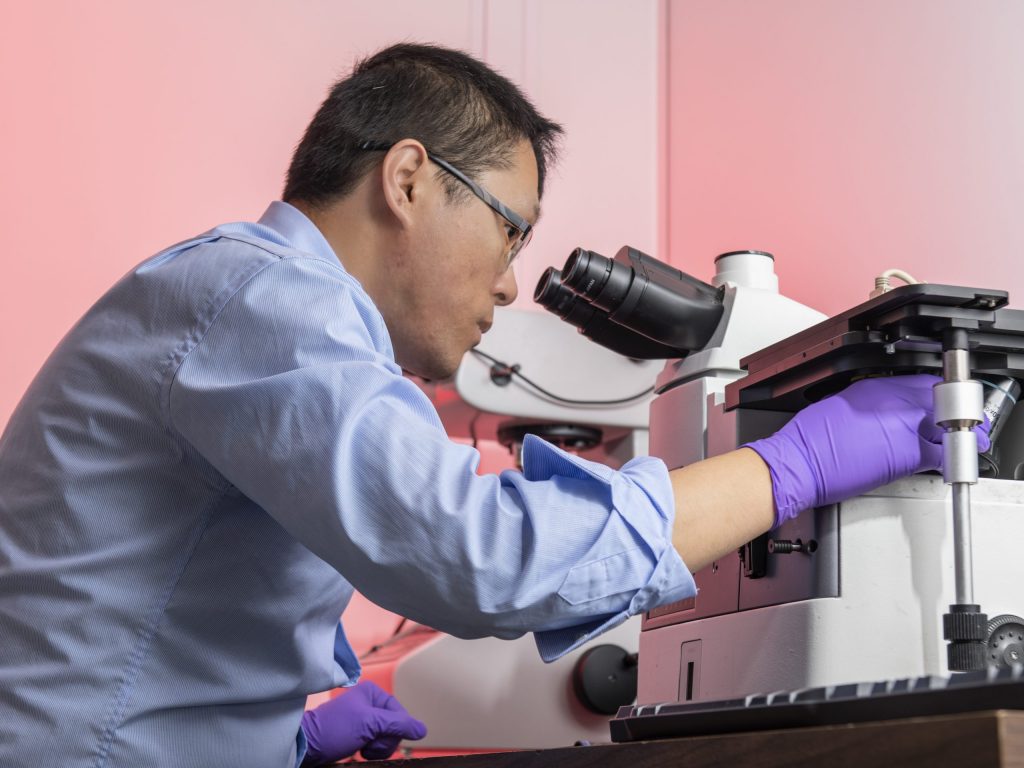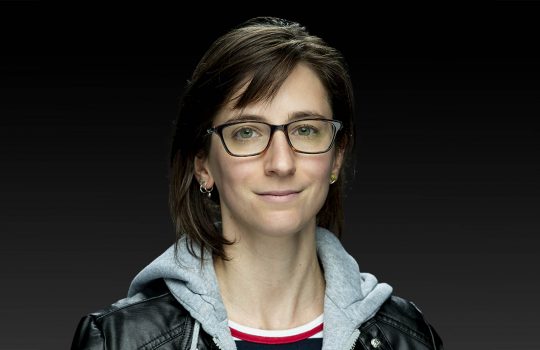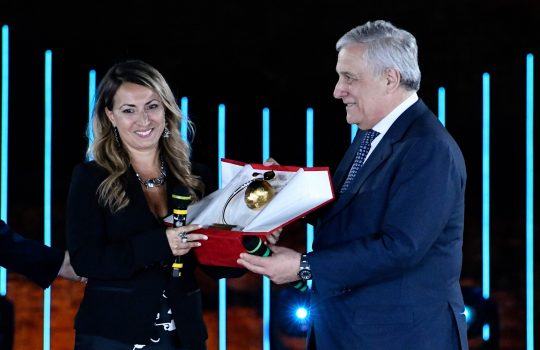
Fermilab scientist Xingchen Xu has received a $2.5 million award to advance research on superconducting magnets for the next generation of particle colliders. Photo: Lynn Johnson, Fermilab
Circular colliders: the energy frontier.
A very high-energy collider is the most powerful future tool for direct discovery of new particles, according to the particle physics community. Designs for a next-generation collider call for magnetic field strengths in the neighborhood of 16 teslas and collision energies around 100 trillion electronvolts. The Large Hadron Collider, whose superconducting magnets operate at 8 teslas, holds a 13 trillion-electronvolt particle collision energy record.
To enter this new realm, Fermilab scientist Xingchen Xu must surmount key research and development challenges for a superconductor called niobium-tin.
Niobium-tin superconductors are unsung heroes of the physics world. They are what enable some nuclear magnetic resonance devices to run, and there are significant prospects for them in particle accelerators and plasma-confining fusion reactors, where they will allow superconducting magnets to operate at fields greater than 10 teslas.
To turn this superconducting material into an accelerator magnet, niobium-tin wire is wound into a coil. The number of windings and the amount of electrical current it carries determine the strength of the magnetic field generated in machines like the Large Hadron Collider or its future successor. The cost of building superconducting magnets increases sharply as coils get larger and could become expensive for the proposed Future Circular Collider, which would need around 8,000 tons of niobium-tin superconductor.
Xu has received the prestigious $2.5 million Department of Energy Early Career Research Award to fund his five-year mission: advancing two technologies that will improve the performance niobium-tin superconductor by 50% or more, allowing for smaller coils, stronger magnetic fields and lower costs.
Scientists produced the first niobium-tin superconductor wires in the 1960s, about seven years after the discovery of the material’s superconducting properties. Over the years they made several advances that made production of the conductor more practical and increased the amount of electrical current the superconductor could carry. However, the critical current density – the amount of electrical current the superconductor can carry per unit area – hit a plateau in the new millennium.
That is, until Xu pioneered a technique to increase the electrical-current capacity of niobium-tin superconductor.
By adding zirconium and oxygen to the niobium, Xu can triple this superconductor’s maximum electrical current at magnetic fields above 15 teslas. His achievement aims to boost superconductor performance to much higher levels.
In parallel research, Xu also plans to improve superconductor stability. By introducing substances with heat capacities hundreds of times higher than that of niobium-tin, Xu is working to make niobium-tin superconductor less sensitive to small temperature changes. Xu hopes that this approach will shorten the time it takes for a superconducting magnet to reach its full field strength.
“Xingchen’s proof-of-concept research yielded very good results, exceeding superconductor specifications of the Future Circular Collider on short-length samples,” said Sergey Belomestnykh, chief technology officer and head of the Fermilab Applied Physics and Superconducting Technology Division. “We are looking forward to new and exciting results from his research.”
With the award, Xu plans to purchase equipment needed to advance the project and fund work performed by industry partners.
“Projects like the proposed Future Circular Collider need niobium-tin superconductor with higher maximum critical current density and stability,” Xu said. “This award will continue to fund development of the technologies for magnet-grade conductors.”



